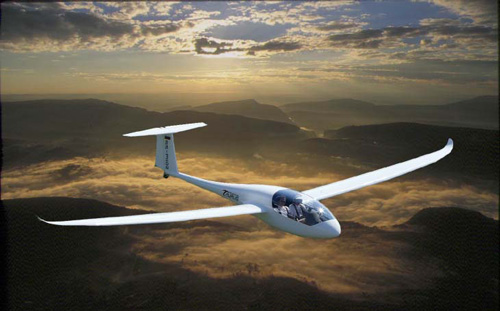A number of years ago, I had decided to fulfill a lifelong dream and learn to pilot glider airplanes. Gliders, or sailplanes, are slim-line engineless air planes that rely on warm air lift and air currents to stay aloft. Gliders are generally towed up into the sky by another plane with a powerful engine. As the desired altitude is reached the tow line is released and the glider plane is on its own — the soaring begins! Because there is no engine, there is no noise; as a result, the silence and sense of peace are ineffable. You can remain aloft, riding hot air currents (for as long as you can find them), and position yourself to take full advantage of this unpowered flight. Otherwise, it’s back to Earth, gently gliding in a controlled descent back to where you started.
I learned to fly gliders in beautiful Chautauqua, New York (home of the Chautauqua Institute of Learning), at a small airport that sported a grass runway. It was a relaxed but detailed atmosphere and more men named Bob than is statistically possible! My instructor, Bob Dart, was the epitome of a great teacher. I learned more from him than merely how to prepare and pilot a glider airplane. The other lessons he taught me will remain with me for a lifetime. I often think of Bob and mention him in my classes. He was the ultimate teacher. I strive to teach each student I have the pleasure to guide as skillfully as he had taught me.
Bob generally maintained a calm, relaxed demeanor, especially when he was teaching. Nothing seemed to stir his emotions nor did he ever ridicule or display disapproval. He was a positive man who knew how to bring the best out of his students, building not only ability but also a confidence in that same ability. Bob had a very basic means of communication as he was teaching the art of flying. He always sat in the plane directly behind me. To teach me, he would calmly and systematically explain the lesson as he showed me how it was done. More often than not, I would loosely rest my hand on the control stick (not a “steering wheel”) and could feel the communication that he was relaying to the plane.
When it was my turn to try, he would calmly announce “you have it,” and let go of the stick; I was, as of that moment, in control — I was flying! If I weren’t doing so well, Bob would gently say “I have it,” and take back the control, while showing me how to properly finesse the glider in a controlled flight. If I had been doing well, Bob would be whistling and just enjoying the ride. I loved when Bob would whistle; it reinforced my efforts and success and it also relaxed me. It was hard to feel stressed when Bob was whistling, but if I did, he would gently put his hands on my shoulders and I’d feel the stress and tension just melt away.
What made Bob such an excellent and effective teacher was that he gained the confidence of his students. I trusted him, as well as his ability to teach me in a non-aversive manner that systematically built on my abilities. Also, I trusted in his ability to keep me safe. Without these factors, I could not have surrendered myself to Bob’s lessons nor would I have ever felt safe and relaxed while gliding so high above the ground.
As Bob would teach me to fly, he remained calm, supportive and instructive. He always reinforced the behaviors and skills that he wanted to build within me. He never ridiculed or punished my mistakes. He would just set me up for success again and let me try my best to succeed, only moving on when he knew I understood the current lesson, since it would necessarily be the foundation for the next. He always taught in increments that allowed for my success, and he always remained consistent. I always knew what he meant and what he wanted from me, and so I couldn’t help but succeed under his direction. Everything he did helped to reinforce my trust in him and kept me wanting to learn more.
This is what I want to give my students, and the same thing I want my students to give their dogs: that we may all communicate with our dogs in a manner that supports trust, encourages active participation, and promotes understanding and ability. These are the goals of good training. When we achieve this, our relationships and the trust that grows within them will soar!


